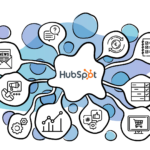Why Accessibility Matters for Shopify Stores
TL;DR: Ensuring accessibility in Shopify stores is essential for compliance, customer satisfaction, and business growth. It prevents legal risks, fosters inclusivity, and enhances the user experience, ultimately leading to higher engagement and conversions. While achieving accessibility presents challenges—such as understanding WCAG guidelines and integrating inclusive design without compromising aesthetics—regular audits, accessibility tools, and continuous education simplify the process. Implementing accessibility solutions, including widgets, optimized UI/UX elements, and user testing, ensures that online stores remain inclusive and legally compliant.
Accessibility is crucial for Shopify stores. ADA compliance is not just a legal necessity. It ensures inclusivity for all users, enhancing customer satisfaction and boosting sales.
Ignoring accessibility can lead to legal and business risks. Non-compliance with ADA standards exposes stores to lawsuits and fines, excluding potential customers with disabilities. This exclusion results in lost sales and a negative user experience.
Accessible design benefits online stores by broadening the customer base and increasing sales opportunities. It offers an inclusive digital experience, fostering customer loyalty and satisfaction. An accessible store aligns with ethical business practices, making commerce better for everyone.
Key Reasons for Accessibility:
- Legal Compliance: Adhering to ADA standards avoids costly legal issues.
- Inclusivity: Ensures all users can access the store, increasing potential sales.
- Enhanced User Experience: Improves satisfaction by catering to diverse needs.
- Business Growth: Opens doors to a broader audience, driving revenue.
Incorporating accessibility into Shopify stores is essential. It is a strategic move that protects against legal risks, enhances user experience, and supports ethical business growth. It is a commitment to inclusivity and excellence in e-commerce.
Challenges in Achieving Accessibility on Shopify
Shopify store owners struggle with making their stores accessible. Following WCAG guidelines is technically challenging. Understanding WCAG requires knowledge of automated and manual audits. Adding features like text-to-speech and proper formatting can be difficult and may require technical skills.
Misconceptions about accessibility can hinder efforts. Many think it limits design creativity, but accessibility enhances user experience without compromising aesthetics. Education helps dispel myths and show the value of inclusive design.
Keeping up with evolving standards is another hurdle. Store owners need to update their stores regularly to stay compliant. They should keep learning to ensure their sites remain accessible. Staying informed helps avoid legal and business risks of non-compliance.
Steps to Overcome Accessibility Challenges:
- Conduct Regular Audits: Use both manual and automated methods. For more insights on maximizing e-commerce success through audits, explore our guide on the vital role of website audits.
- Follow WCAG Guidelines: Stay updated with the latest standards.
- Educate Your Team: Dispel myths about accessibility limiting creativity.
- Implement Necessary Features: Use widgets and proper coding practices.
- Continuous Learning: Stay informed about accessibility trends. For additional strategies to enhance your e-commerce development, visit our blog covering various aspects of e-commerce success.
Tools and Strategies for Improving Accessibility
Enhancing accessibility on Shopify stores involves leveraging practical tools and strategies that deliver an inclusive user experience. Accessibility widgets and apps are fundamental, providing features such as adjustable text size, color contrast modifications, and screen reader compatibility. These tools empower store owners to cater to diverse user needs with ease.
Manual and automated audits are essential in pinpointing accessibility issues. For a comprehensive approach to these audits, our Shopify Partner Package offers a detailed +254 point analysis that can significantly enhance efficiency, user experience, and sales. Conducting these audits regularly helps identify areas needing improvement. Addressing these gaps ensures compliance with accessibility standards and enhances overall user satisfaction.
Integrating accessibility into the development process is crucial. Using reusable components streamlines the inclusion of accessibility features in every update. For those looking to integrate accessibility with other systems, our Shopify Ecommerce Development page details how to enhance user experience while ensuring seamless integration with CRMs and B2B systems. This approach embeds accessibility into the core of development practices, ensuring that compliance is maintained effortlessly.
Key Strategies to Implement:
- Use Accessibility Widgets: Employ tools for text size adjustment and color contrast.
- Conduct Regular Audits: Identify and fix issues through manual and automated checks.
- Incorporate Reusable Components: Streamline accessibility in development.
- Engage in User Testing: Address real-world accessibility challenges with continuous feedback.
Implementing Accessibility Solutions on Shopify
Implementing accessibility solutions on Shopify stores is a straightforward process that enhances user experience and compliance. Start by conducting thorough audits to identify potential accessibility issues. These audits should include both manual and automated methods to ensure a comprehensive analysis.
- Conduct Comprehensive Audits: Regularly assess your store using both manual and automated tools to pinpoint accessibility gaps. For more insights on maximizing your Shopify store’s potential, consider our free audit for Shopify and SEO, which identifies areas for improvement and growth opportunities.
- Implement Necessary Adjustments: Update site features to meet accessibility standards. This includes optimizing text size, color contrast, and ensuring screen reader compatibility.
- Utilize Accessibility Tools: Leverage accessibility widgets and apps designed for Shopify. These tools simplify the integration of essential features like text-to-speech and adjustable interfaces. For a deeper understanding of e-commerce success factors, explore our page on Shopify’s impact on e-commerce growth, which covers UI/UX design, security, and checkout optimization.
Ongoing education is vital. Stay informed about the latest accessibility best practices and standards. Engage in continuous learning and discussions with your team to dispel myths and enhance understanding.
Regular user testing should be part of your strategy. This provides real-world insights into how users interact with your site, allowing for targeted improvements. Testing ensures that updates don’t compromise accessibility.
By following these steps, Shopify store owners can create an inclusive and user-friendly environment, aligning with both legal requirements and ethical business practices.
Key Takeaways on Shopify Accessibility
Accessibility in Shopify stores matters. It ensures compliance and boosts customer satisfaction, driving growth. Accessibility expands your customer base, increases sales, and supports ethical practices.
Challenges exist. Understanding WCAG guidelines and integrating accessibility features can be tricky. Regular audits, learning, and the right tools help address these challenges. Accessibility enhances user experience and sparks creativity.
Key Points:
- Inclusive Design: Accessibility improves user experience and widens reach.
- Legal Compliance: Prevents potential lawsuits and fines.
- Business Growth: Unlocks new sales channels and builds loyalty.
- Continuous Improvement: Regular updates and audits maintain compliance.
We encourage Shopify store owners to make accessibility a core strategy. This commitment creates a more inclusive and successful online presence, boosting user engagement and growth.






